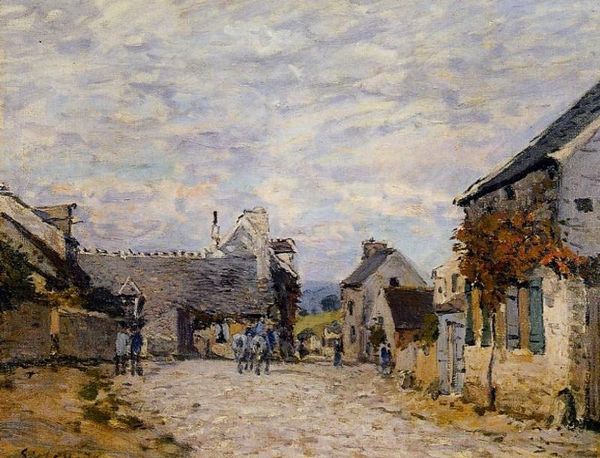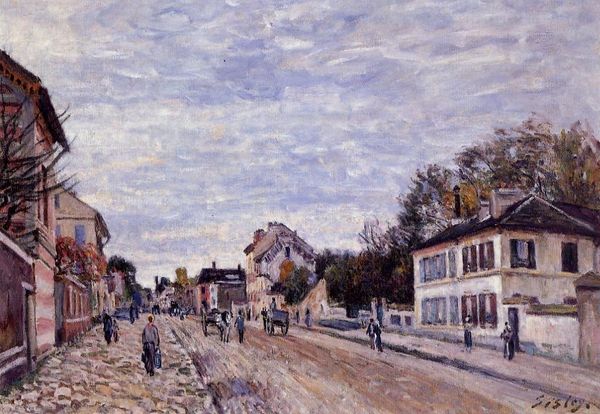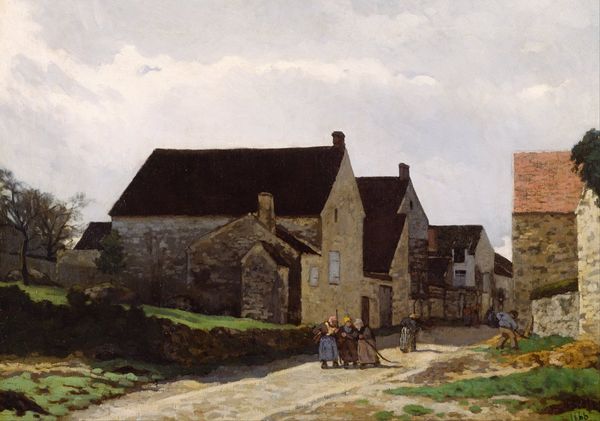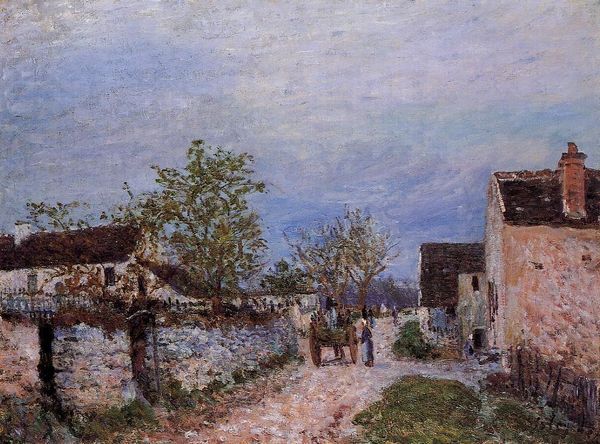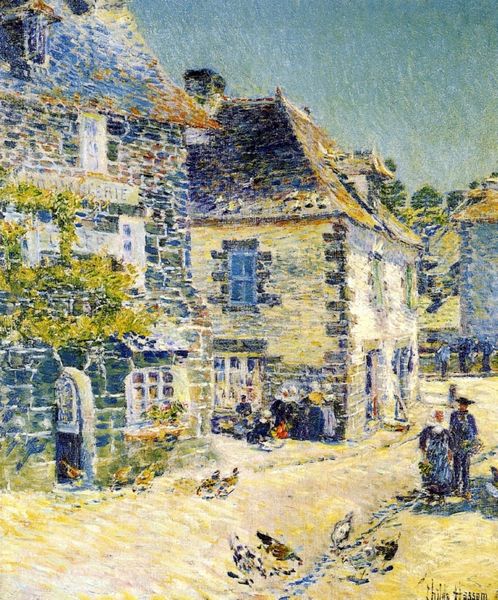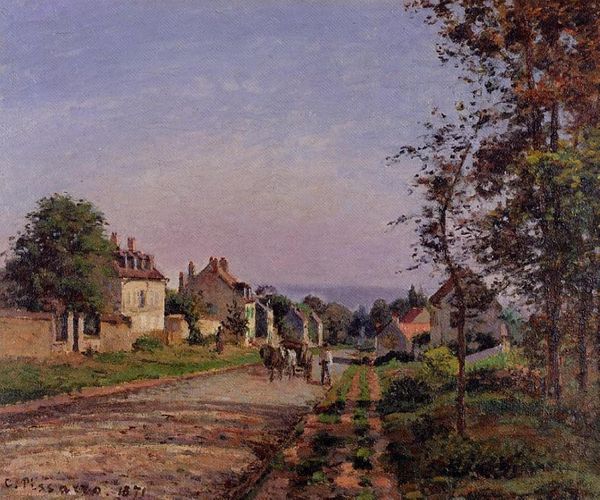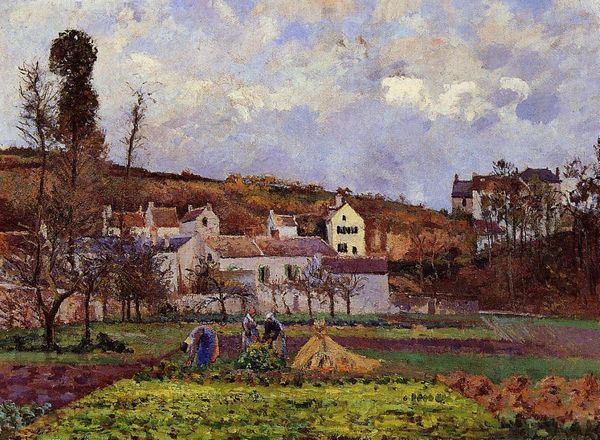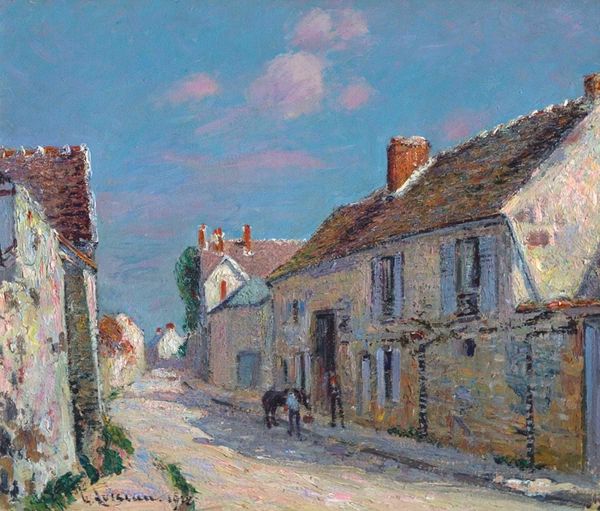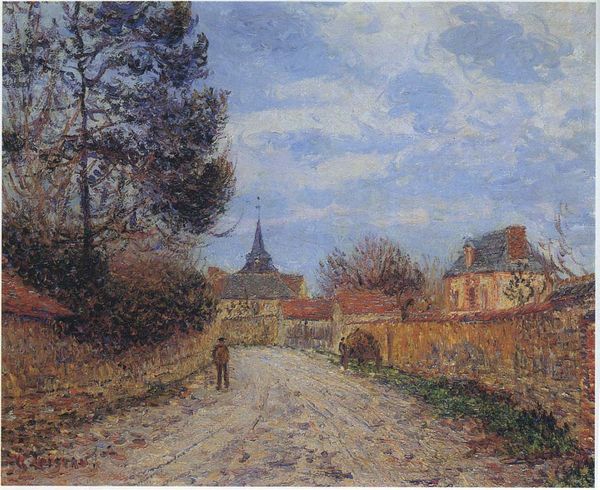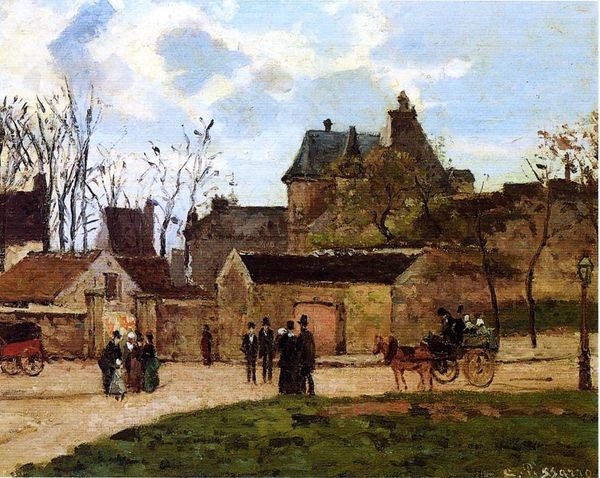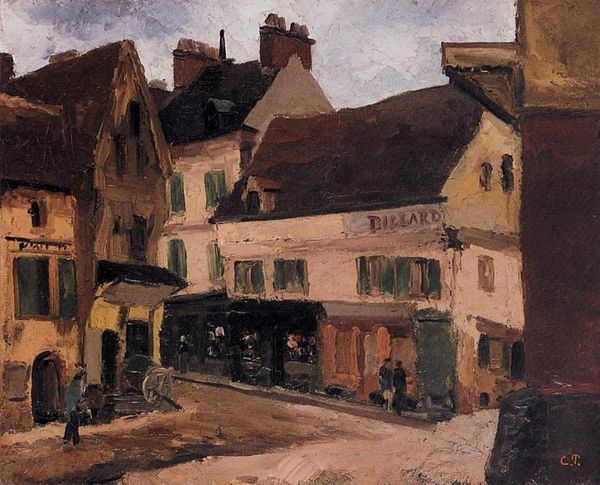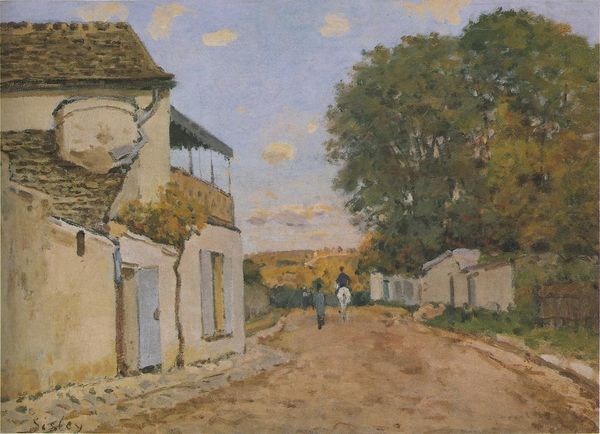
painting, plein-air, oil-paint
#
16_19th-century
#
painting
#
impressionism
#
street view
#
plein-air
#
oil-paint
#
landscape
#
cityscape
#
genre-painting
#
realism
Dimensions: 38 x 55 cm
Copyright: Public domain
Editor: We’re looking at Alfred Sisley's “Village Street Grey Weather” from 1874. It’s an oil painting, and I’m struck by how everyday and unglamorous it feels. The muted tones and the almost blurred figures make it seem like a fleeting glimpse of ordinary life. What can you tell us about this painting? Curator: For me, this work speaks volumes about the rapidly changing social landscape of the late 19th century and how Impressionism became a vital vehicle to reflect these material shifts. Think about the ready-made pigments Sisley would have used. Oil paint in tubes democratized painting; artists no longer needed to grind their own. How does that availability affect the *labor* of art making and its *portability*? Editor: That’s fascinating. So, the very materials themselves changed the artistic process? How might that influence what he chose to depict? Curator: Precisely! The convenience allowed Sisley to work *en plein air*, capturing the immediate, sensory experience of the world around him – the "grey weather," the activity of the village itself. These quickly executed works – how are they displayed, sold? The material conditions of the painting become tied to the social and economic structures. The rise of the middle class, seeking affordable, ‘real’ representations of their world fuels a burgeoning art market…do you see how the painting operates within those shifting parameters? Editor: Yes, the focus on the mundane suggests a different kind of patron, perhaps one who values scenes of everyday life over grand historical narratives. Curator: Exactly. Sisley wasn't just painting a street; he was participating in a new economy of art, reflecting and shaping contemporary social values. Consider the cost of canvas, of paint itself and how it allowed Sisley to represent something previously considered of little significance. It raises the status of “the street”. What does it mean when previously unrepresented areas of society now receive artistic status? Editor: So much to consider! It’s clear this seemingly simple painting has complex implications about art and society at the time. Thanks for opening my eyes to that! Curator: My pleasure! Examining art through a materialist lens encourages us to constantly ask: how does production affect not just the appearance of a work, but its cultural function and economic trajectory?
Comments
No comments
Be the first to comment and join the conversation on the ultimate creative platform.
